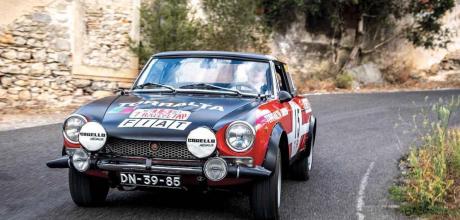215bhp 1972 Abarth 124 Spider Works Rally Car
Abarth’s 124 Spider is often overlooked as a rally hero. Richard Heseltine reckons it’s time to set the record straight.
Photography Bernardo Lucio
Archive images Edigdes Vintage Archive
WORKS ABARTH 124 SPIDER
On the road in a WRC veteran
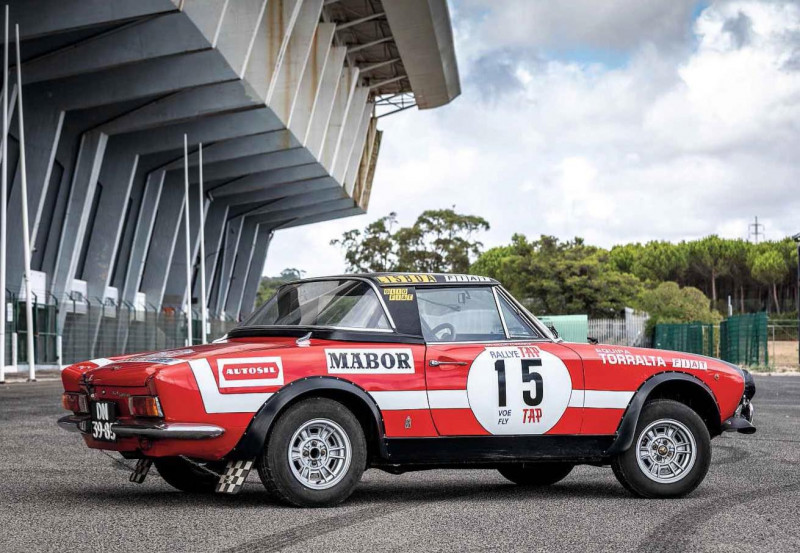
The streets are crooked, narrow and serpentine; a splatter of dwellings communing with nature, bar a couple of holdouts. A man of meagre cheer looks on, offering a glare that could maim, but he has every reason to be miffed. We are making a bit of a racket, after all, though it’s hard not to when you are driving a rally car; one that has trouble getting out of its own way at low revs, but gingers up conspicuously at the 5000rpm mark. Which is where the commotion starts: open exhausts tend to have that effect. Our arrival is trumpeted from at least a mile away.
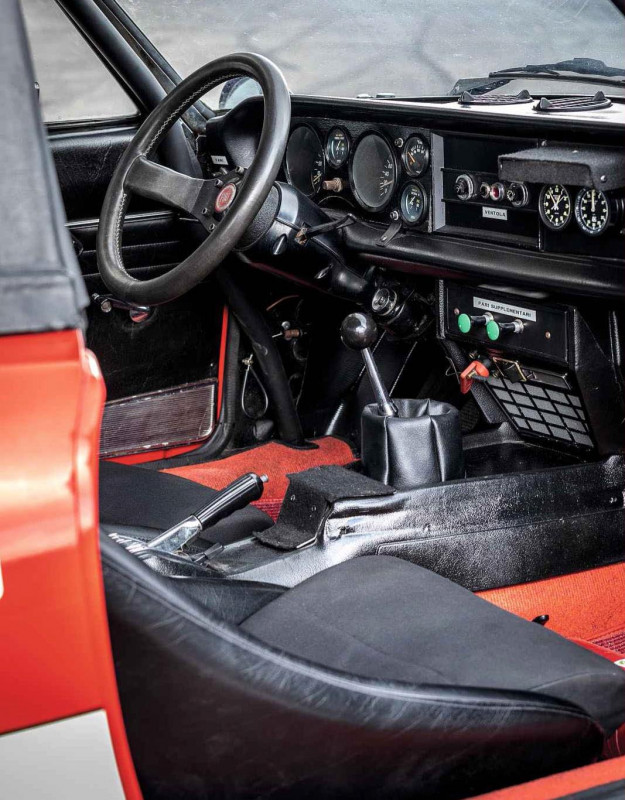
It doesn’t help that this street’s a dead end, and reverse gear appears to be migratory. It’s never where you left it but, hey, this Abarth-ised Fiat 124 is all about forward momentum and always has been. More runs for the photographer, more commotion, then it’s back to the nearby Circuito do Estoril, but not before we dodge Olympic-sized potholes and cough and splutter past the outbuildings behind the track. They are in regular use, and the colourful’ sorts who frequent them are not at all happy at the ruckus. Neither are their clients.
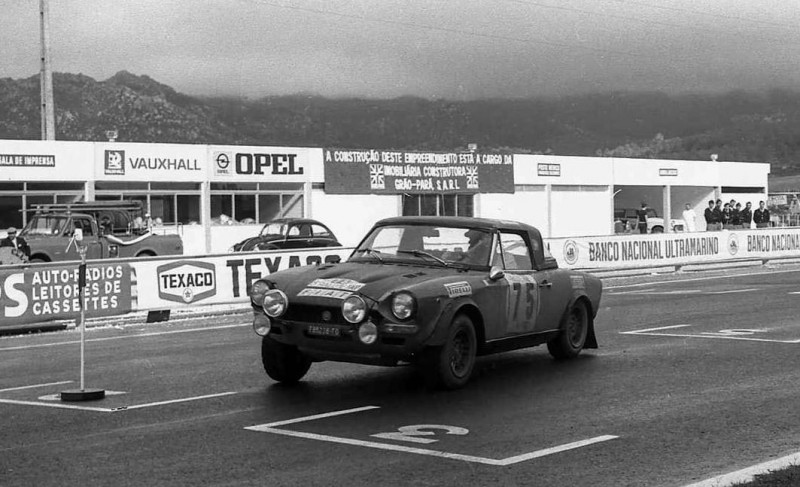
The choice of this historic if dormant Portuguese venue is apposite, given that the car pictured here lapped the circuit in anger in period. It did so during the country’s round of the World Rally Championship. It was fielded by the factory and later by one of the leading national squads, complete with backing from the local concessionaire. And that is before you factor in its role as a development mule, plus assorted privateer campaigns. The livery isn’t just for show, here. This is a warhorse, and one that was central to the story of a car that tends to be overlooked whenever rallying in the 1970s is discussed.
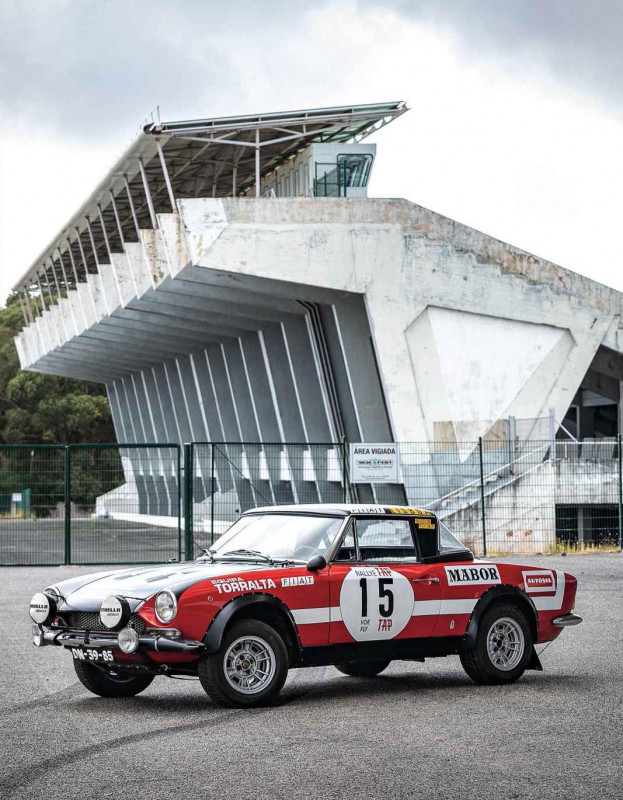
You see, the Abarth 124 in its various guises proved a winner at WRC level. It’s just that it triumphed during a golden era of off-piste motorsport. In addition to marques such as Ford and Alpine, Fiat also faced two formidable opponents from within the same family: the ageing Lancia Fulvia and, ultimately, the Stratos. As such, it was always bound to be overshadowed when viewed in retrospect, but we would posit that it was one of the most significant rally cars of its generation, if not necessarily for the reasons you might expect. Aside from anything, it marked the jumping-off point for Abarth’s role as Fiat’s de facto competition department.
After vacating the Grand Prix arena in the 1920s, Fiat had generally left it to subsidiaries and associated outfits to claim the plaudits, but the 1970s saw its name up front and centre. The Spider was selected for its campaign for one simple reason: it was deemed sufficiently strong structurally, while there was potential for further developments in terms of engine, drivetrain and suspension. The 1970 season saw Alcide Pagnelli and ‘Nini’ Russo claim the Italian series title, while the works Fiat squad competed in selected rounds internationally in 1971. Star signing Hakan Lindberg finished seventh on the Monte Carlo Rally alongside fellow Swede Solve Andreasson.
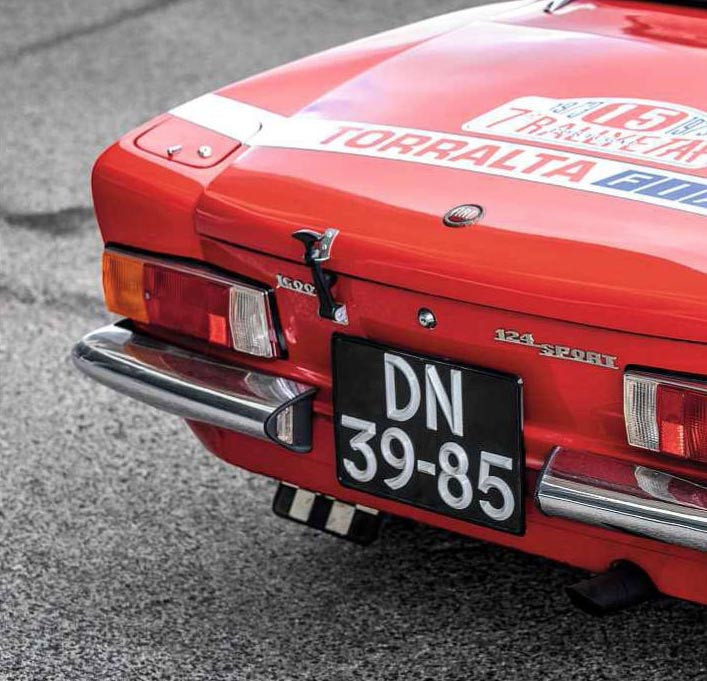
The 124 in Group 4 trim was still running the regular car’s 1608cc ‘four’ on twin Weber 44s, not to mention a beam axle arrangement, but this was but an amuse bouche to what was to come. That year had seen Fiat acquire a 50% stake in Abarth and move its motorsport operation into the factory located at Corso March 38, Turin, shortly thereafter. A much- modified Spider producing around 165bhp, and equipped with a Colotti straight-cut box, placed eighth on the season-opening Monte Carlo Rally in 1972. That year also saw Raffaele Pinto claim the European Rally Championship title, the works ace also bagging the prestigious Mitropa Cup gong while he was at it.
The big news, though, was the arrival of ‘Project SE026’ on the October 1972 TAP Rally of Portugal. Paganelli and Russo came home fifth in the car pictured here, despite being obliged to run in the prototype class. The new strain, with independent rear suspension and a twin-cam engine, was fastest on five stages and might have won outright but for a fuel pump problem. The necessary 500 Abarth Rally CSAs in Stradale form had purportedly been built by the time it was homologated in January 1973. Aside from the engine and suspension changes, the CSA featured a glassfibre bonnet, bootlid and hardtop, aluminium outer sills, rear lower quarter panels and doorskins, a seam-welded front cradle for the engine, and a lot more besides. In definitive form it also incorporated wider 8in wheels and glassfibre extensions to cover them.
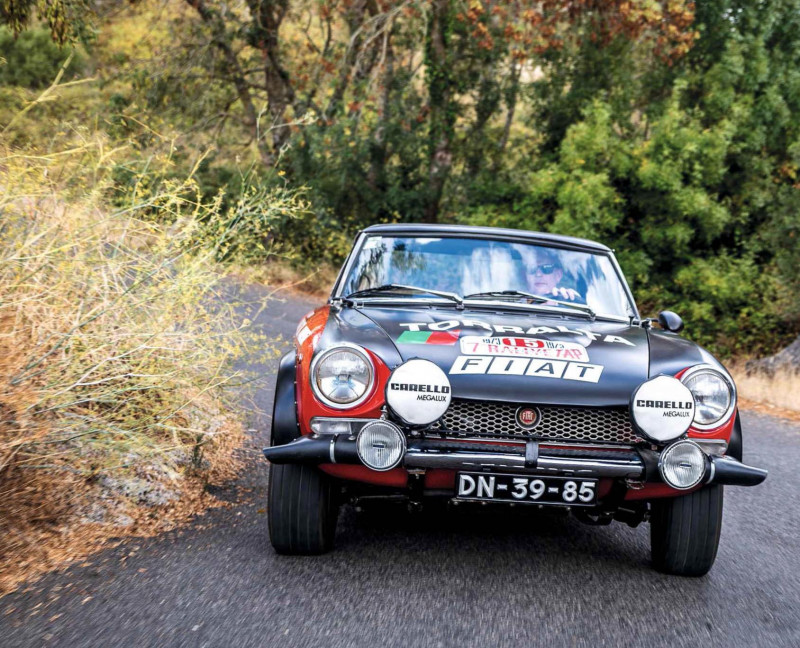
The works team had 28 cars at its disposal over the course of the season, and the 124 kicked off with victory on the Rally of Poland. Achim Warmbold and Jean Todt’s victory was a hollow one, nonetheless. This was the first year of the WRC (then just for manufacturers), and only three cars were classified as finishers. The nearest challenger, the Wartburg of Egon Culmbacher and Werner Ernst, was almost three hours behind. Elsewhere, a freelancing Rauno Aaltonen and Robin Turvey were second on the Acropolis Rally.
In 1974 the 124s were homologated into Group 3 and equipped with 16-valve Abarth 236/B heads. Engine capacity was raised to 1839cc, with power hiked to 210bhp. By the time the season had ended, displacement had been farther increased to 1850cc and a ZF ’box replaced the Colotti unit. There were successes, too, with Fiats blanketing the podium positions on the TAP Rally of Portugal. Markka Alen was also in contention for honours on the Press-on-Regardless Rally in Michigan but had to settle for second place due to an infringement. Fiat finished the year runners-up to Lancia in the World Championship, but had the consolation prize of winning the Italian series.
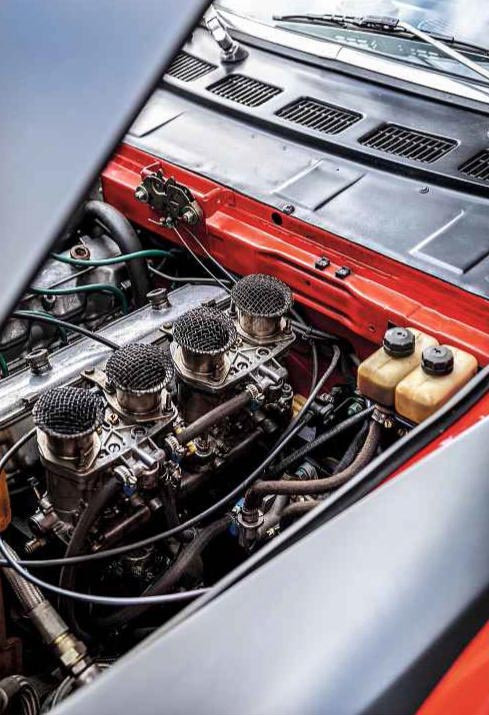
There would be one farther WRC win for the model, when Fiat secured repeat honours in Portugal in 1975. In its ultimate form, the 124 ran Kugelfischer fuel injection while acting as a testbed for the forthcoming 131 Abarth. Its final outing at WRC level was on the 1976 Monte Carlo Rally.
‘Our’ car, meanwhile, had a longer career than most iterations of rally Spiders. Chassis F858238TO was registered on 10 February 1972 and was one of the cars used by Pinto and Macaluso to win that year’s European title. After a five-month break from active duty, it competed on the TAP Rally of Portugal, placing fifth overall. The Abarth was then employed as a development car ahead of the 1973 season, and ran in Portugal with the new 1756cc twin-cam unit and the independent rear end that foretold the CSA’s set-up. It ended its works career with victories on the Rally of Yugoslavia in October 1972 for Pinto/ Macaluso and the 1000-mile Austrian round of the European series that same month.
Fiat’s Portuguese arm took on the car for the 1973 season along with two sister cars, and fielded them under the Equipa Torralta Fiat banner (Torralta was a prominent real estate developer). The squad had claimed the previous year’s Group 1 Portuguese Rally Championship with a Fiat 1258, and ‘our’ car won first time out on the Rally das Camelias.
Local star Luis Netto led Mario Figueiredo home for a Fiat one-two, and claimed farther victories and podium placings throughout the year. He also guided the car to fourth place on the Portuguese round of the WRC alongside Manuel Coentro. His season tally included the Iberian Championship in addition to the Portuguese title. However, there was no chance of him defending his crowns. Equipa Torralta Fiat was disbanded at the end of the year and the car was sold to Preditur (another real estate developer), which installed Netto and new wingman ‘Jocames’ for 1974. However, they managed only one event up to April of that year before Portugal was gripped by revolution.
When motorsport recommenced in 1975, the Fiat was in the hands of gentleman driver Andre Martinho. He didn’t get on with the car so soon sold it to Henrique Brites, who campaigned it until 1978 before hanging his helmet up. He retained the 124 until September 2005, its subsequent keeper engaging Fabrizio Borra to return it to its original splendour. And it really is splendid, thanks to an obsessional desire to get the details correct. The most problematic aspect of the restoration was sourcing the correct Fusina steering wheel, only ever employed on the works 124s. That, and locating the proper 7in Cromodora wheels.
From its glare-resistant black bonnet to the bank of spotlights, the riveted-on ’arch extensions and the typeface of its many logos, everything about the car screams 1973 rally weapon. This point is rammed home on firing up the car outside its lair (an industrial unit in Lisbon that’s nondescript on the outside, brimfull of treasure on the inside). It’s not happy at idle, emitting a wheezy parp that morphs into a lumpy ther-thump-ther-thump played out at the sort of volume usually reserved for artillery fire. It acts as an espresso shot for the imagination. Suddenly, you are Markka Alen about to come over all Maximum Attack.
Reality dawns as soon as you attempt to extricate yourself from the business park and head for the motorway out of town. The Fiat is purgatorial to drive in stop-start traffic and you would be amazed were it otherwise. It is noticeable, though. Even if you can’t see this 1970s throwback, you will certainly hear it. The car thrives on revs and without them it gets bogged down and more than a little bad- tempered. Once onto three lanes of mostly smooth asphalt and able to accelerate, it is quick — and with the engine note matched for decibels by the transmission whine.
The gearchange is unbelievably tricky to master off the bat, too. You are obliged to double-declutch up and down the Colotti box, which dominates proceedings, and there is no room for tactility. Each cog nudges into place with a resounding ker-klunk. It is seriously hard work to begin with, yet the rest of the car is delightful so long as the road is clear.
Once free of obstacles and into the boondocks, the Fiat comes to life. The controls are beautifully weighted, the steering lighter than you might imagine but tightening the moment the suspension is loaded. There is body roll, as befits a rally car from 50 years ago, but it never threatens to spill. It’s just so… communicative.
Pitch the car into a corner and the nose tucks in cleanly. Exit the bend, plant the throttle and the tail squirms a little before gluing itself to the asphalt. And the noise! The deep induction throb makes your heart sing, the sound of it pop-pop-popping on the overrun awakening your inner Alen. Without anything so sissy as sound deadening, the backbeat is piped into the cabin unfiltered. It is as intoxicating as it is anti-social. Unfortunately, the sunshine mood is abruptly dampened after a misfire develops and the Fiat takes a turn for the truculent. Playtime is soon over. We still have the return journey to make, after all.
This is so much more than just a tricked-out Fiat Spider. Its furies are furious indeed; even a brief sortie tells you this. Abarth created a weapon, one that fought a war and built foundations for Italian marques to sweep all before them during the rest of the 1970s, throughout the 1980s and beyond. Think 131 Abarth, think 037, think Delta S4, think Integrale. Think… .Well, you get the idea.
THANKS TO Manuel Ferrao and Adelino Dinis.
‘THE SOUND OF IT POP-POP-POPPING ON THE OVERRUN AWAKENS YOUR INNER ALEN’
From opposite, far left Bins behind the seats good for crash helmets; another entry in the TAP Rally of Portugal, this time in 1974; interior is functional and features correct ultra-rare works steering wheel.
TECHNICAL DATA 1972 Abarth 124 Spider Works Rally Car
- Engine 1756cc DOHC four-cylinder, two Weber 44IDF 21 carburettors
- Max Power 215bhp @ 7000rpm (approx)
- Max Torque 129lb ft @ 4400rpm (approx)
- Transmission Five-speed close-ratio Colotti gearbox, rear-wheel drive
- Steering Rack and pinion
- Suspension Front: MacPherson struts, lower wishbones, coil springs, anti-roll bar. Rear: MacPherson struts, lower radius arms, coil springs, anti-roll bar
- Brakes All Discs
- Weight 970kg
- Top speed 120mph (est)
- Acceleration 0-62mph 6.9 sec (est)
THE WORKS TEAM HAD 28 CARS AT ITS DISPOSAL AV THE 124 KICKED OFF WITH VICTORY IN POLAND’
Right and below Paganelli and Russo, on their way to fifth in the 1972 TAP Rally of Portugal; competition-bred 1756cc twin-cam, twin-carb four is good for 215bhp.
This page and opposite, bottom Abarth returns to historic Estoril circuit, which it lapped in anger in period; rally tripmeters are a clue to the car's works heritage.


